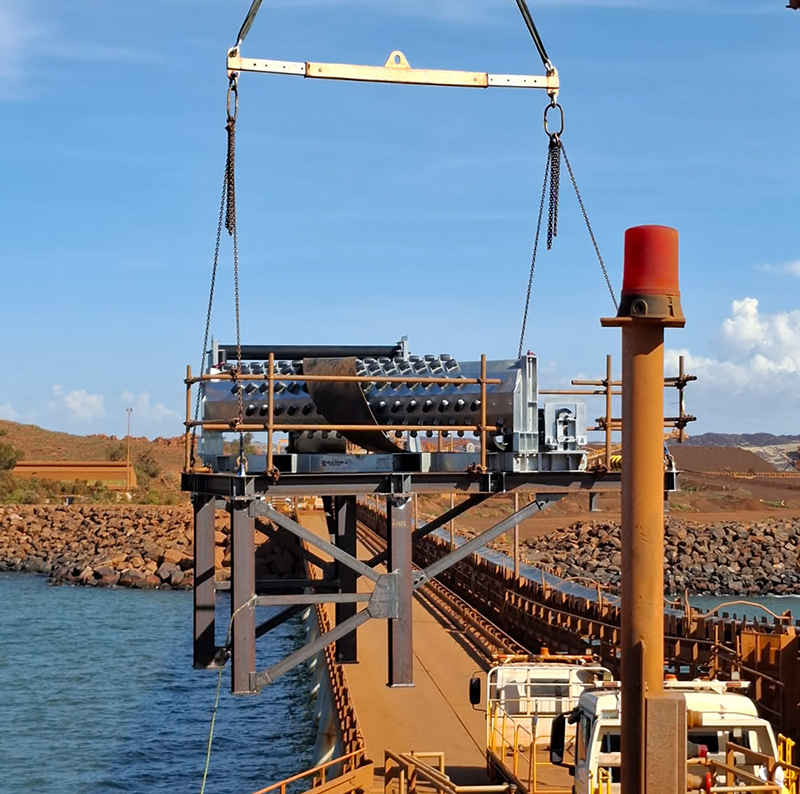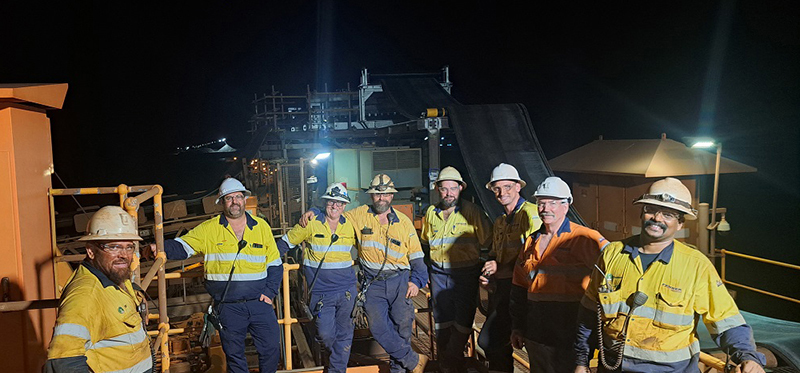Wharf Belt Replacement: A First at Pilbara-Based Port Operation
Collaboration between Fenner Conveyors and a valued Pilbara client has ensured the successful completion of a major wharf conveyor belt replacement.
The change-out of this unique conveyor system has strict safety and operational requirements to mitigate potential risks. Traditionally, this has required the use of smaller reels with six splices, increasing manual handling exposure, or alternatively deployment of a jack-up barge for full-length reels - a high-cost and high-risk marine operation.
Fenner Conveyors identified these risks early through hazard analysis and initiated a collaborative review.

From findings of the review a core solution was conceptualised and developed with the help of Belle Banne Belt Handling Engineering Manager, Cameron Trott. This involved using the adjacent conveyor and a Belle Banne pony drive to feed the conveyor belt from land.
“It was a seamless collaboration between our team and the client’s site engineers,” Trott stated. We were in constant communication, validating every step through modelling and trials. That level of teamwork made all the difference.”

This innovative methodology for the change-out used a conveyor belt to carry another 780-meter belt, powered by the Belle Banne-supplied pony drive. This creative approach to belt handling significantly reduced manual handling and improved overall safety by eliminating marine lifting and reducing splice count from six to four, where previously six rolls were required due to weight restrictions on the wharf.
The solution was successfully implemented within just three 12-hour shifts, with zero injuries, on time, and under budget.
Conveyor System Supervisor, Andrew Barndon, explain that the project is a strong example of how engineering innovation and cross-team collaboration can lead to safer, more efficient solutions. It sets a new benchmark for safety in conveyor belt replacements and is highly transferable across similar industrial operations.
“By leveraging existing infrastructure and thinking outside the box, we eliminated potential marine lifting risks and delivered a smarter, safer solution for the client,” said Barndon.
